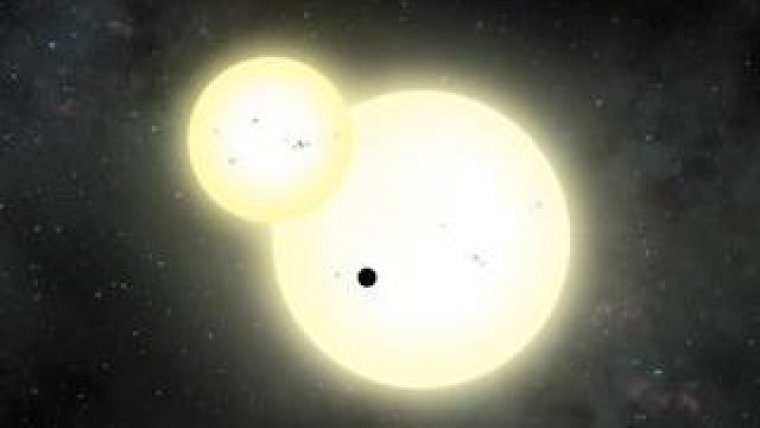| News / Space News |
New Planet Is Largest Discovered That Orbits Two Suns
Astronomers from NASA’s Goddard Space Flight Center in Greenbelt, Maryland, and San Diego State University (SDSU) in California, used NASA's Kepler Space Telescope to identify the new planet, Kepler-1647b, the largest planet yet discovered around a double-star system, in the constellation Cygnus.

Artist's impression of Kepler-1647. ![]()
Kepler-1647 is 3,700 light-years away and approximately 4.4 billion years old, roughly the same age as Earth. The stars are similar to the sun, with one slightly larger than our home star and the other slightly smaller. The planet has a mass and radius nearly identical to that of Jupiter, making it the largest transiting circumbinary planet ever found.
Planets that orbit two stars are known as circumbinary planets, or sometimes “Tatooine” planets, after Luke Skywalker’s home world in “Star Wars.” Using Kepler data, astronomers search for slight dips in brightness that hint a planet might be passing or transiting in front of a star, blocking a tiny amount of the star’s light.
The planet takes 1,107 days – just over three years – to orbit its host stars, the longest period of any confirmed transiting exoplanet found so far. The planet is also much further away from its stars than any other circumbinary planet, breaking with the tendency for circumbinary planets to have close-in orbits. Interestingly, its orbit puts the planet within the so-called habitable zone–the range of distances from a star where liquid water might pool on the surface of an orbiting planet.
Like Jupiter, however, Kepler-1647b is a gas giant, making the planet unlikely to host life. Yet if the planet has large moons, they could potentially be suitable for life.
YOU MAY ALSO LIKE



